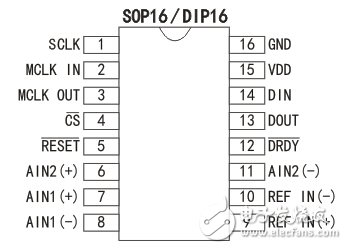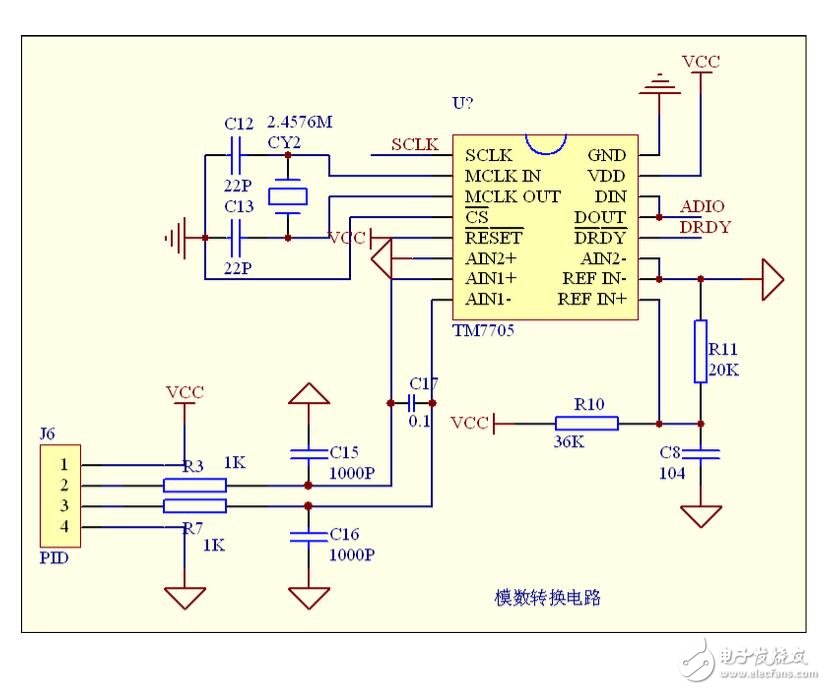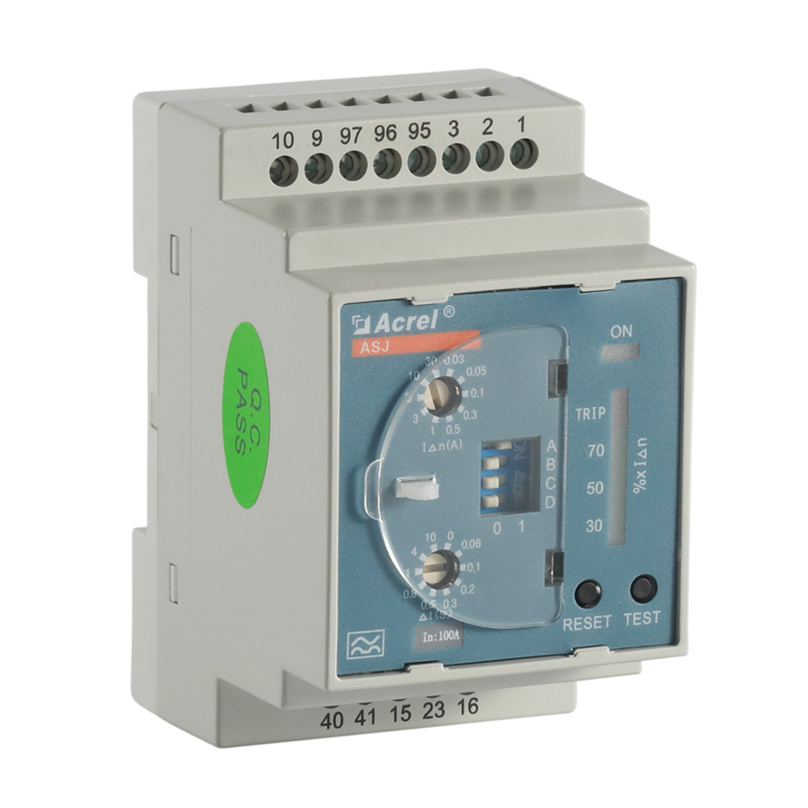TM7705 Chinese information, TM7705 introduction:
The TM7705 is a 2/3 channel analog front end for low frequency measurements. The device accepts low-level input signals directly from the sensor and then produces a serial digital output. 16-bit lossless code performance is achieved using sigma-delta conversion techniques. The selected input signal is sent to a gain programmable programmable front end based on an analog modulator. An on-chip digital filter processes the output signal of the modulator. The first notch of the digital filter is programmed by the on-chip control register, which adjusts the filter's cutoff point and output update rate.
The TM7705 requires only a single 2.7~3.3V or 4.75~5.25V supply. The TM7705 is a dual channel fully differential analog input with a differential reference input. When the supply voltage is 5V and the reference voltage is 2.5V, the device can process signals with input signals ranging from 0~+20mV to 0~+2.5V. It can also handle bipolar input signals from ±20mV to ±2.5V. The TM7705 is referenced to the AIN(-) input. When the power supply voltage is 3V and the reference voltage is 1.225V, it can handle 0~+10mV to 0~+1.225V unipolar input signals. Its bipolar input signal range is ±10mV to ±1.225V. Therefore, the TM7705 can perform conditioning and conversion of all signals in a 2/3 channel system.
The TM7705 is ideal for intelligent systems, microcontroller systems and DSP-based systems. Its serial interface can be configured as a three-wire interface. The choice of gain value, signal polarity, and update rate can be configured by software using the serial input. The device also includes self-calibration and system calibration options to eliminate gain and offset errors in the device itself or the system.
The CMOS structure ensures very low power consumption and the power-down mode reduces standby power consumption to 20μW (typ). The TM7705 is available in 16-pin plastic dual in-line (DIP) and 16-pin wide (0.3-inch) SOIC, 16-pin TSSOP, 16-pin SOP and 16-pin SSOP packages.
TM7705 package drawing:

TM7705 product features:
• 2 fully differential input channel ADCs
• 16-bit no missing code
• 0.003% nonlinear
• Programmable gain front end
• Gain: 1~128
• Three-wire serial interface
• Ability to buffer analog inputs
• 2.7 ~ 3.3V or 4.75 ~ 5.25V working voltage
• Maximum power consumption is 1mW at 3V
• The maximum waiting current is 8μA
• 16-pin DIP, SOIC (wide body) and TSSOP, SOP, SSOP packages
TM7705 IC Data Register Reader:
/* Driver IC: TM7705 MCU: STC12C5620AD Crystal 11.0592MHz Function: Read and write IC register program, for reference only*/
#include "reg51.h"
#include "intrins.h"
Sbit SCLK = P2^7;
Sbit DIN = P2^6; / / corresponding to the DIN of the TM7705
Sbit DOUT = P2^5;//corresponds to DOUT of TM7705
Sbit DRDY = P2^4;
Void TM7705_write(unsigned char dd)
{
Unsigned char i;
SCLK=1;
For(i=8;i>0;i--)
{
SCLK=0;
_nop_();
If(dd&0x80)
DIN=1;
Else
DIN=0;
_nop_();
SCLK=1;
_nop_();
Dd<<=1;
}
DIN=1;
SCLK=1;
}
Unsigned char TM7705_read(void)
{
Unsigned char dd=0,i;
SCLK=1;
For(i=0;i<8;i++)
{
SCLK=0;
_nop_();
Dd=dd<<1;
If(DOUT)
Dd=dd+1;
SCLK=1;
_nop_();
}
SCLK=1;
Return dd;
}
Void main()
{
Unsigned char i,temp1,temp2;
Unsigned char gain,freq;
Unsigned char num;
DRDY=1;//Set DRDY as input
DOUT=1; / / set DOUT as input
//TM7705 initialization
DIN=1;
For(i=0;i<40;i++)// DIN port high level for at least 32 clocks after chip reset
{
SCLK=0;
_nop_();
SCLK=1;
_nop_();
}
/ / Set TM7705
TM7705_write(0x22);//write communication register, select next write clock register
TM7705_write(0x04|freq);//Select output update rate is 50 (0x00), 60 (0x01), 250 (0x02), 50
TM7705_write(0x12);//write communication register, select next write register
TM7705_write(0x42|(gain<<3)); //bipolar, self-calibration//gain 1 (0x00), 2 (0x08), 4 (0x10), 8 (0x18), 16 (0x20),
/ * Count value of 500, until the data is stable * /
Num=0xff;
While(num--) {
While(DRDY);
TM7705_write(0x3A); //Write the communication register, select the next read channel 0
Temp1 = TM7705_read();//Read data 16 bits
Temp2 = TM7705_read();
While(!DRDY);
}
/*Read data*/
Num=0;
While(1)
{
While(DRDY);
TM7705_write(0x3A); //Write the communication register, select the next read channel 0
Temp1 = TM7705_read();//Read data 16 bits
Temp2 = TM7705_read(); //add you code
While(!DRDY);
}
}
TM7705 read and write IC memory circuit diagram:

Din rail energy meter relay of after-current, low-voltage circuit break or low-voltage contactor can be made up for combined after-current production device, Earth fault leakage current protective device is mainly applied for the TT and TN system distributing circuit with the alternating current 50Hz, the rated voltage 400V or below. ASJ Series Type AC leakage current operated relay of action relay of after-current is applied in the earth fault protection for the electric circuit, so as to prevent the equipment damage and the fire accident of electric equipment caused by the ground fault current, moreover, Leakage fault protective relay also can provide indirect contact protection against the electric shock risk.

Founded in 2003, one of the few leading companies in China who provides various systematic solutions of power monitoring, powercontrol, energy management and electrical safety for smart grid users. Substation automation system, power quality managementsystem, energy management system, electrical fire monitoring system, IT distribution system for medical locations, precisedistribution management system, FEPS power supply monitoring system, fire emergency lighting and evacuate indicating system, smart lighting control system and electric vehicle charging system.
Single Phase Din Rail Energy Meter,Three Phase Din Rail Energy Meter,Modular Multi Channel Kwh Meter,Din Rail Energy Meter
Jiangsu Acrel Electrical Manufacturing Co., LTD. , https://www.acrel-factory.com